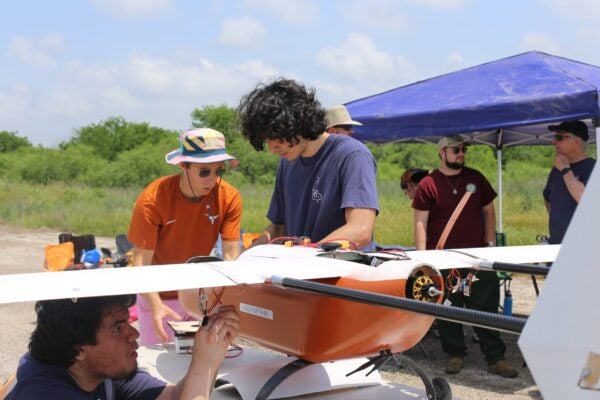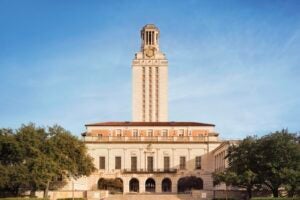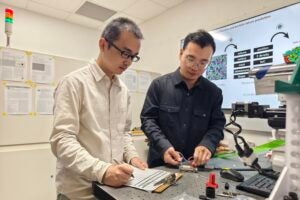A team of scientists and engineers from The University of Texas at Austin, partnering with the University of Southampton, the University of Edinburgh and Texas A&M Forest Service, is one of 15 semifinalists to move on to the next stage of XPRIZE Wildfire’s $5 million Autonomous Wildfire Response Track. The semifinalist teams are developing fully autonomous systems that can detect and suppress high-risk wildfires within minutes of ignition — before they escalate into destructive events.
The Challenge: Develop fully autonomous, integrated systems that can:
- Detect, assess and suppress an incipient-stage, high-risk wildfire
- Operate fully autonomously with no human intervention
- Do so in under 10 minutes, across a 1,000 km2 area
- Ignore low-risk fires — proving precision, not just speed
UT’s Approach: The FLARE-X team aims to tackle the challenge of fast detection and suppression using a fleet of low-cost, high-performance drones. Powered by HRI-based AI algorithms, the system delivers real-time situational awareness and precision-guided payload drops, dramatically accelerating response times and improving outcomes. The solution involves three main stages: dynamic pre-fire risk mapping; active fire detection, monitoring and verification; and fire suppression.

The Team:
- UT Austin (lead): Cockrell School of Engineering and Jackson School of Geosciences
- University of Southampton
- University of Edinburgh
- Texas A&M Forest Service
What’s Next: In this next stage of the competition, teams move on to real-world field testing. Over the coming months, the XPRIZE Wildfire operations team will travel to each semifinalist team location for in-field testing. Teams will physically demonstrate their autonomous end-to-end wildfire response system, including smart detection, autonomous navigation and safety, and autonomous suppression, along with an overall technical readiness and scalability assessment of their system.
These live trials will be captured by the testing partner, the Alaska Center for Unmanned Aircraft Systems Integration, and will be used for official judging, offering a unique behind-the-scenes look at wildfire technology in action.
XPRIZE Wildfire is a four-year, $11 million competition incentivizing the innovation of firefighting technologies that will end destructive wildfires so that humanity and beneficial wildfire can safely co-exist. The prize aims to transform current wildfire management approaches through the development of new technologies that can rapidly and accurately detect, characterize and respond to wildfires before they become destructive.
Learn More:




